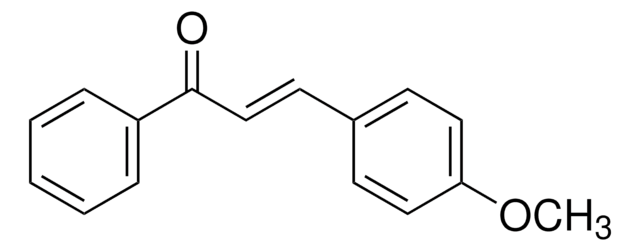1.60309
Sodium hydroxide solution
c(NaOH) =0.01 mol/l (0.01 N), Titripur®, Reag. USP
Synonym(e):
Natronlauge, Natriumhydroxid -Lösung
About This Item
Empfohlene Produkte
Produktbezeichnung
Natriumhydroxid, 0.01 M NaOH (0.01 N), Titripur®, reag. USP
Agentur
reag. USP
Qualitätsniveau
Dampfdruck
3 mmHg ( 37 °C)
Produktlinie
Titripur®
Form
liquid
Qualität
Analyzed in our ISO 17025 accredited QC lab
Eignung der Reaktion
reaction type: Acid-base reactions
Verpackung
Titripac® of
Konzentration
0.01 M NaOH (0.01 N)
Methode(n)
titration: suitable
Lagertemp.
15-25°C
SMILES String
[OH-].[Na+]
InChI
1S/Na.H2O/h;1H2/q+1;/p-1
InChIKey
HEMHJVSKTPXQMS-UHFFFAOYSA-M
Suchen Sie nach ähnlichen Produkten? Aufrufen Leitfaden zum Produktvergleich
Verwandte Kategorien
Anwendung
- Improvement of durability and drying shrinkage of sodium carbonate activated slag through the incorporation of calcium hydroxide and sodium hydroxide.: Im Rahmen dieser Studie wird untersucht, wie sich Natriumhydroxid und Calciumhydroxid in Natriumcarbonat-aktivierte Schlacke einarbeiten lassen. Die Ergebnisse zeigen signifikante Verbesserungen der Haltbarkeits- und Trockenschrumpfeigenschaften des Materials, was es zu einer praktikablen Option für Bauanwendungen macht, bei denen eine verbesserte Leistung erforderlich ist (Construction and Building Materials, 2020).
- Effect of Sodium Silicate to Hydroxide Ratio and Sodium Hydroxide Concentration on the Physico-Mechanical Properties of Geopolymer Binders.: Diese Studie untersucht den Einfluss des Verhältnisses von Natriumsilikat zu Natriumhydroxid und der Konzentration von Natriumhydroxid auf die mechanischen Eigenschaften von Geopolymerbindemitteln auf Metakaolinbasis. Die Ergebnisse zeigen, dass sowohl das Verhältnis als auch die Konzentration die Druck- und Biegefestigkeit der Bindemittel erheblich beeinflussen, was wertvolle Erkenntnisse für die Optimierung von Geopolymerformulierungen liefert (East African Journal of Engineering, 2023).
- Effect of Sodium Hydroxide, Liquid Sodium Silicate, Calcium Hydroxide, and Slag on the Mechanical Properties and Mineral Crystal Structure Evolution of Polymer Materials.: Diese Forschungsarbeit untersucht die Rolle von Natriumhydroxid, flüssigem Natriumsilikat, Calciumhydroxid und Schlacke bei der Entwicklung mechanischer Eigenschaften und Mineralkristallstrukturen in Polymerwerkstoffen. Die Studie zeigt, dass Natriumhydroxid für die Schaffung einer stark alkalischen Umgebung unerlässlich ist, welche die Bildung nützlicher Mineralkristalle fördert und so die Druckfestigkeit der Materialien erhöht (Crystals, 2021).
- Effects of Sodium Hydroxide and Calcium Hydroxide on the Phase Equilibria of Methane Hydrates.: Diese Studie untersucht die Auswirkungen von Natriumhydroxid und Calciumhydroxid auf die Phasengleichgewichte von Methanhydraten. Die Ergebnisse geben Aufschluss darüber, wie diese Verbindungen die Hydratstabilität und -bildung beeinflussen, was für Anwendungen in der Erdgasspeicherung und -beförderung von entscheidender Bedeutung ist (SSRN Electronic Journal, 2022).
Leistungsmerkmale und Vorteile
Diese volumetrische Lösung wird von unserem Kalibrierlabor D-K-15185-01-00 analysiert, das gemäß DIN EN ISO/IEC 17025 zur Analyse von Stoffmengenkonzentrationen in volumetrischen Lösungen von der DAkkS (Deutsche Akkreditierungsstelle) akkreditiert ist. Das Akkreditierungszertifikat finden Sie unter www.sigmalaldrich.com/ISO17025.
Verpackung
Hinweis zur Analyse
Stoffmengenkonzentration 0,00995–0,01005 mol
Messunsicherheit ± 0,00003 mol/l
Rückführbar auf NIST SRM
Die Konzentration wird mittels volumetrischer Titration bestimmt und entspricht 20 °C.
Die Stoffmengenkonzentration dieser volumetrischen Lösung wird mit standardisierter Salzsäurelösung (Artikelnummer 1.09060) bestimmt. Die Salzsäurelösung ist standardisiert und auf Primärstandardreferenzmaterial (SRM) des National Institute of Standards and Technology, Gaithersburg, USA (NIST SRM 723 Tris(hydroxymethyl)aminomethan) anhand des volumetrischem Standards Tris(hydroxymethyl)aminomethan (Artikelnummer 1.02408), zertifiziertes Referenzmaterial gemäß ISO 17034, analysiert durch unser akkreditiertes Kalibrierlabor von Merck KGaA, Darmstadt, Deutschland, gemäß DIN EN ISO/IEC 17025 rückführbar. Die Unsicherheit wird als erweiterte Messunsicherheit mit einem Überdeckungsfaktor k=2 ausgedrückt und deckt ein Konfidenzniveau von 95 % ab.
Hinweis: Der Titer ist ein Korrekturfaktor zur Korrektur von Variationen der volumetrischen Lösung, der Titrationsgeräte, der Temperatur und anderer Laborbedingungen. Um korrekte Titrationsergebnisse zu erzielen, wird empfohlen, einen Titer mit laboreigenen Geräten und unter laborspezifischen Bedingungen direkt nach dem Öffnen einer neuen Flasche und in regelmäßigen Abständen zu bestimmen.
Rechtliche Hinweise
Ähnliches Produkt
Lagerklassenschlüssel
12 - Non Combustible Liquids
WGK
nwg
Flammpunkt (°F)
Not applicable
Flammpunkt (°C)
Not applicable
Analysenzertifikate (COA)
Suchen Sie nach Analysenzertifikate (COA), indem Sie die Lot-/Chargennummer des Produkts eingeben. Lot- und Chargennummern sind auf dem Produktetikett hinter den Wörtern ‘Lot’ oder ‘Batch’ (Lot oder Charge) zu finden.
Besitzen Sie dieses Produkt bereits?
In der Dokumentenbibliothek finden Sie die Dokumentation zu den Produkten, die Sie kürzlich erworben haben.
Kunden haben sich ebenfalls angesehen
Unser Team von Wissenschaftlern verfügt über Erfahrung in allen Forschungsbereichen einschließlich Life Science, Materialwissenschaften, chemischer Synthese, Chromatographie, Analytik und vielen mehr..
Setzen Sie sich mit dem technischen Dienst in Verbindung.





